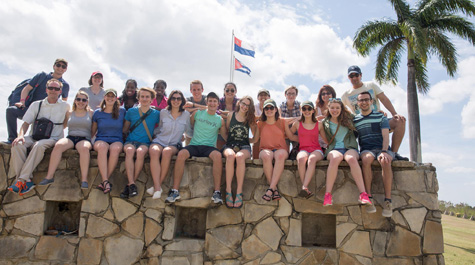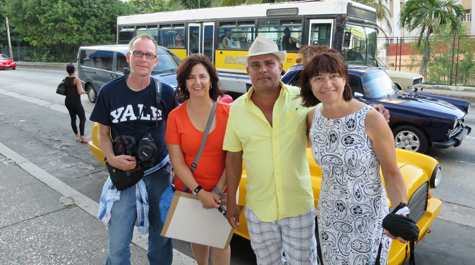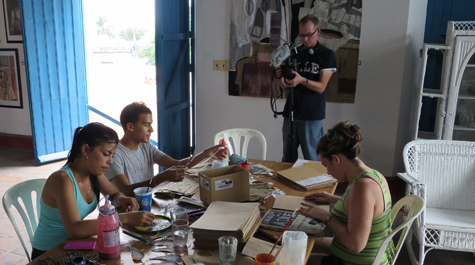On location in Cuba: Fostering creativity and forging connections
When the stars and stripes were raised over the U.S. Embassy in Havana this past August, William & Mary was front and center — literally. Reporter David Culver ’09 and Ann Marie Stock, professor of Hispanic studies and film and media studies, perched on a balcony overlooking the iconic Malecón seawall. They teamed up to report the event for U.S. audiences, sharing news that was aired on WRC TV, the NBC affiliate in Washington, D.C.
“It was one of those full-circle moments,” said Stock. “What began as a faculty-student research collaboration at William & Mary has evolved into a professional partnership helping connect the U.S. and Cuba.”
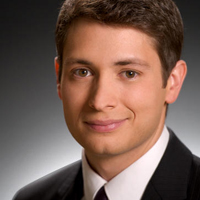 The collaboration began when Culver enrolled in a new media workshop taught by Stock and Troy Davis, Swem Library’s head of media services. As part of the workshop, students subtitled Cuban documentaries and filmed interviews with filmmakers and artists from the island. Their collective efforts were impressive: a presentation of student work at a Humanities conference, the inclusion of their documentary at the Havana Film Festival in New York and the selection of subtitled films for inclusion in the Cuban Cinema Classics DVD series. The experience was formative for students and faculty, especially Culver, who – born into a Cuban-American family – had always been fascinated with the island-nation.
The collaboration began when Culver enrolled in a new media workshop taught by Stock and Troy Davis, Swem Library’s head of media services. As part of the workshop, students subtitled Cuban documentaries and filmed interviews with filmmakers and artists from the island. Their collective efforts were impressive: a presentation of student work at a Humanities conference, the inclusion of their documentary at the Havana Film Festival in New York and the selection of subtitled films for inclusion in the Cuban Cinema Classics DVD series. The experience was formative for students and faculty, especially Culver, who – born into a Cuban-American family – had always been fascinated with the island-nation.
"Ann Marie and Troy Davis brought together my two passions, Cuba and visual storytelling, into this one revolutionary class,” he said. “I can't help but think it best prepared me for my visits to Cuba as a journalist.
“It's still surreal for me to think while I was a student Ann Marie and I talked often about visiting Cuba together, and just a few years later there we were realizing that dream amidst a historic day in Havana.”
Over the past several years, Swem Library has expanded its collection of Cuban culture materials and its support of initiatives designed to engage Cuban filmmakers and artists. This summer, Dean of University Libraries Carrie Cooper and Director of Special Collections Jay Gaidmore joined Davis and Stock on a trip to Cuba. Their mission: to acquire collection materials, to explore the tradition of book arts and publishing and to gather digital material for the growing archive related to Cuba’s vibrant film culture.
{{youtube:medium:center|jjfjYcJPI1w, Recapping the trip to Cuba}}
“The trip to Cuba underscored the importance of making the world better informed about Cuban film and culture, and our library’s role in making it happen soon,” Cooper said. “Libraries are natural partners when it comes to supporting digital projects and faculty research. The materials that have been acquired on trips and the stories that have been captured along the way will highlight the institution’s work in Cuba.”
Among the acquisition highlights were two collections of film posters. One is devoted to the films of the internationally renowned director, Tomás Gutiérrez Alea. The other showcases films that, for one reason or another, have never been made; these “ghost posters” reveal the talent of the young graphic artists living and working in Cuba today.
“Special Collections has been making a concerted effort to grow its holdings on Latin America,” Gaidmore said. “The acquisition of complete sets of both poster collections has really moved this effort forward. These posters not only document the rich film history of Cuba but also the talent of so many of the country’s graphic artists.”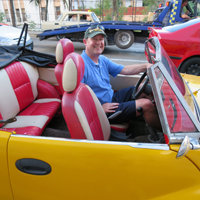
Another treasure trove was discovered in the provincial capital of Matanzas, just east of Havana. There the group visited Ediciones Vigia, a book arts workshop, and met with director Laura Ruiz. Ruiz discussed the creative processes employed by the bookmakers and also dedicated a few collections of her poetry to Swem Library.
As Cooper and Gaidmore were catching the plane to return home, Stock and Davis were boarding a bus for a 13-hour ride across the island and high up into the Sierra Maestra mountains. Their destination: Television Serrana (TVS), a community media organization. Their mission: to film interviews with TVS creators for Swem’s growing digital Cuba archive, to study the feasibility of bringing W&M students to study and work alongside the TVS filmmakers, and to catch up with documentary filmmaker Carlos Rodríguez, who visited Swem Library in 2014.
What’s next? Swem is excited to continue its partnership with Stock, supporting her research and teaching related to Cuba’s film culture. A crucial next step is to inventory and archive materials Stock has collected during more than 60 research trips to Cuba over the past 25 years.
“The material is extraordinary, tracking as it does the accelerated changes on the island during this time,” said Stock.
Through this ongoing faculty-library partnership, and with funds raised through the campaign, Swem aims to preserve these unique materials and make them accessible across the university and far beyond.
This spring, Stock and Davis have once again offered the new media workshop, in which the recently acquired materials have figured prominently. In fact, the first class project was a student-curated exhibit of the ghost posters, now on display in Swem Library's Botecourt Gallery. In addition, during spring break, 16 students traveled to Cuba with Stock and Davis to visit Televisión Serrana. The digital material gathered from both trips – photographs, filmed interviews, “B roll” of the land and people – will be used by students to create original projects.















